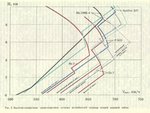Delcyros, are you surd about the doras and c3 fuel? I thought most ran on b4 still.
Erich, do you mean r4m with hollow charge (i think panzerblitz was the name)? I thought these were very very rarely used and mostly by fw 190f. It's an interesting topic as i think the combination of fighter bomber with hollow-charge, fin stabilized rocket salvos was probably the best way to attack tanks with ww2 technology. But i'm ignored in all those let's-build-the-ww2-warthog threads with that
Erich, do you mean r4m with hollow charge (i think panzerblitz was the name)? I thought these were very very rarely used and mostly by fw 190f. It's an interesting topic as i think the combination of fighter bomber with hollow-charge, fin stabilized rocket salvos was probably the best way to attack tanks with ww2 technology. But i'm ignored in all those let's-build-the-ww2-warthog threads with that


